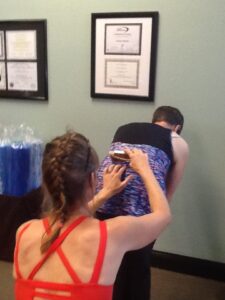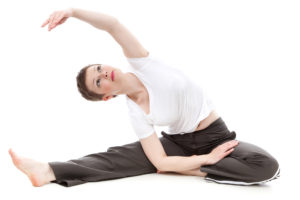How Can Pilates For Scoliosis Help You Feel Better?

Pilates For Scoliosis can assist with helping you feel healthy and fit. In fact, when it comes to scoliosis, a change in the spine’s shape that can occur as you grow up, particularly around puberty, you can do plenty of pilates for scoliosis movements to alleviate potential pain. So before we can discuss how pilates can those with scoliosis, it’ll help to know what scoliosis is.
What Is Scoliosis?
Because scoliosis is idiopathic, meaning no one knows why it occurs, it can arise with an injury or the aging process. As an example, if you injure your hip, knee, or ankle, you may put more weight on the opposite leg, which could cause you to lean sideways. Thus, not only does the spine bend, but scoliosis also rotates in the same direction as the side that is bending. So if the spine is bending to the right, then the bones rotate to the right. When the bones rotate, the ribs do as well, resulting in a ribbed bump, a visual prominence in the rib cage.
What Can Result From Scoliosis?
Evidently, overcompensating could result in a curve of the spine in the shape of a capital C. Not only could the C face either the right or left side of your body, but it could also round the greatest at the apex of the center portion of your spine. In addition, the S curve is another class that can become prominent during the aging process. Since scoliosis could create pain and discomfort, it might feel as though you can’t remain physically active. Despite these potential long-term effects, pilates is a wonderful tool to combat the results of scoliosis. If you want to learn more about how scoliosis affects the body and effective pilates tips to stay active and boost your health, then keep reading.
1. How Does Scoliosis Affect The Body?
Studies show the lack of a proactive approach regarding scoliosis prevention makes parents frustrated. Since the likelihood of scoliosis grows over time through the ‘wait and see’ approach, a mild curve could range from 10-15 degrees, a moderate curve from 25-30, and a severe range of 30 or more degrees. Undoubtedly, if scoliosis worsens and the curve gets larger, the potential repercussions to the spine and internal organs are serious. Some examples are:
- 1. Compressed lungs
- 2. Decreased energy levels and tolerance of activity
- 3. Back pain could increase with prolonged standing or sitting
- 4. Clothes might not fit right
- 5. Impaired balance
As a result of the lack of proactiveness, not only could the curve increase, but you could also experience an additional bend in the back, known as thoracic kyphosis, an increased rounding of the upper back. In addition to an increased curve, other symptoms could be the prominence of the ribs on one side, a forward head, and a hollowing of the ribs on the side opposite of the curve. With these issues in mind, you might ask yourself what to do if you find yourself stricken with this ailment.
2. What Should You Do About Scoliosis?

Lisa Stolze, Polestar Educator, Physical Therapist, and certified C2 Schroth Scoliosis Therapist, provides tips for best exercises if you’re dealing with scoliosisis. If you’re looking for different ways to slow the development of scoliosis, try:
- 1. Performing Pilates exercises that focus on elongating the spine.
- 2. Work on correcting your posture as a lifelong habit.
- 3. Use proper support when sitting or working on the computer
- 4. Work on becoming more physically fit
- 5. Exercise to keep your muscles strong enough to support the spine
3. Stretch The Spine
Because you are going through scoliosis, one suggestion to curtail problems is to stretch the spine. Solio Pilates are exercises designed specifically for scoliosis using pilates equipment such as a reformer, spine corrector, combo chair, Pedi-pull, and Pilates props. When you do solio pilates, you:
- a. Strengthen weak or tight muscles and lengthen the curve of your spine
- b. Improve your awareness of and ability to correct your posture to make it more symmetrical
- c. Use diaphragmatic breathing to improve your lung expansion
A scoliosis diagnosis doesn’t mean you can’t live a happy, healthy life. There are ways to balance your life through Pilates practice, but you have to be dedicated to the changes needed to succeed. If you want to better your life, try out these suggestions mentioned in this article.
Susan Baver Mann, PT, DPT